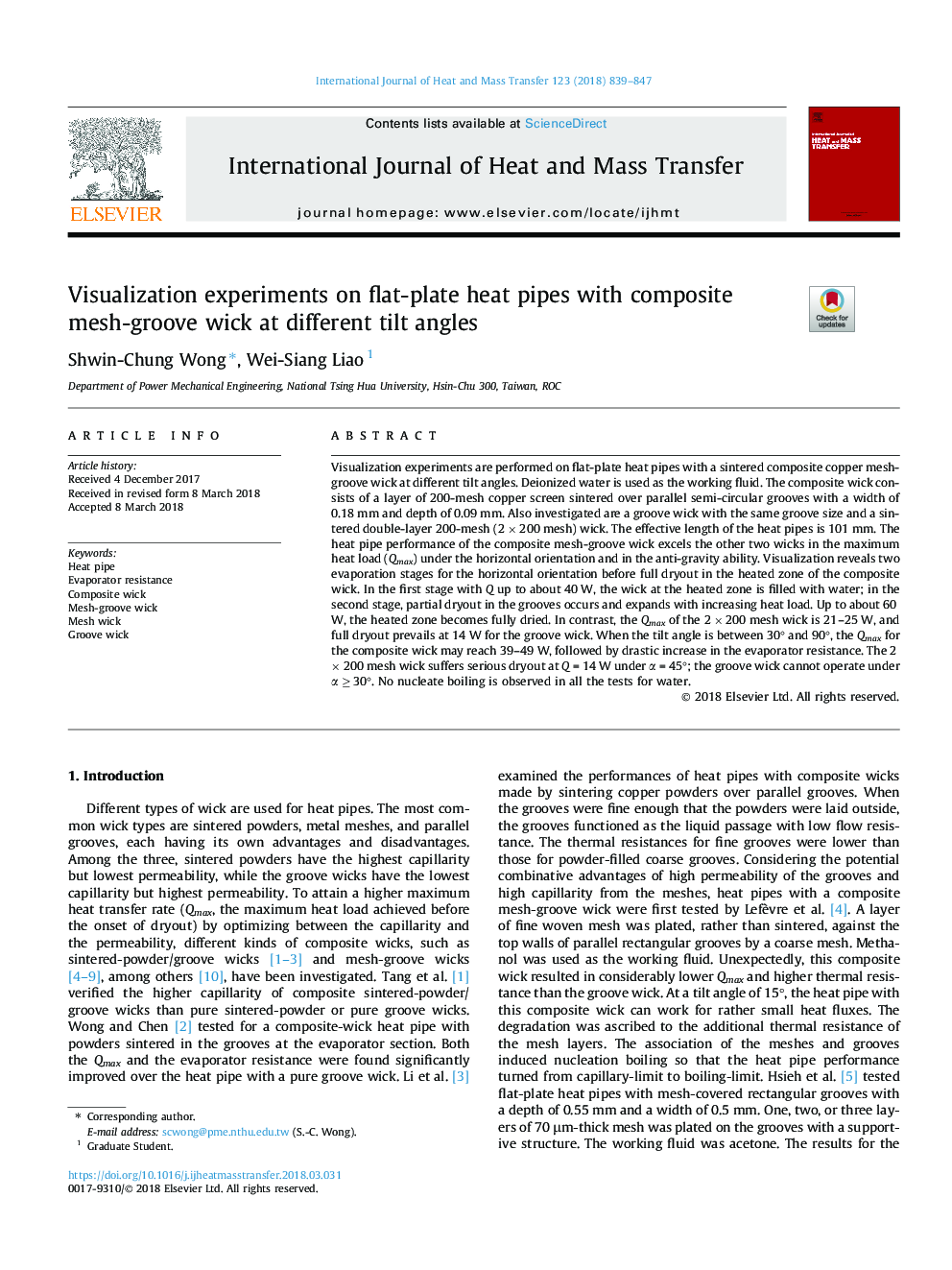| Article ID | Journal | Published Year | Pages | File Type |
|---|---|---|---|---|
| 7054313 | International Journal of Heat and Mass Transfer | 2018 | 9 Pages |
Abstract
Visualization experiments are performed on flat-plate heat pipes with a sintered composite copper mesh-groove wick at different tilt angles. Deionized water is used as the working fluid. The composite wick consists of a layer of 200-mesh copper screen sintered over parallel semi-circular grooves with a width of 0.18â¯mm and depth of 0.09â¯mm. Also investigated are a groove wick with the same groove size and a sintered double-layer 200-mesh (2â¯Ãâ¯200â¯mesh) wick. The effective length of the heat pipes is 101â¯mm. The heat pipe performance of the composite mesh-groove wick excels the other two wicks in the maximum heat load (Qmax) under the horizontal orientation and in the anti-gravity ability. Visualization reveals two evaporation stages for the horizontal orientation before full dryout in the heated zone of the composite wick. In the first stage with Q up to about 40â¯W, the wick at the heated zone is filled with water; in the second stage, partial dryout in the grooves occurs and expands with increasing heat load. Up to about 60â¯W, the heated zone becomes fully dried. In contrast, the Qmax of the 2â¯Ãâ¯200â¯mesh wick is 21-25â¯W, and full dryout prevails at 14â¯W for the groove wick. When the tilt angle is between 30° and 90°, the Qmax for the composite wick may reach 39-49â¯W, followed by drastic increase in the evaporator resistance. The 2â¯Ãâ¯200 mesh wick suffers serious dryout at Qâ¯=â¯14â¯W under αâ¯=â¯45°; the groove wick cannot operate under αâ¯â¥â¯30°. No nucleate boiling is observed in all the tests for water.
Related Topics
Physical Sciences and Engineering
Chemical Engineering
Fluid Flow and Transfer Processes
Authors
Shwin-Chung Wong, Wei-Siang Liao,
